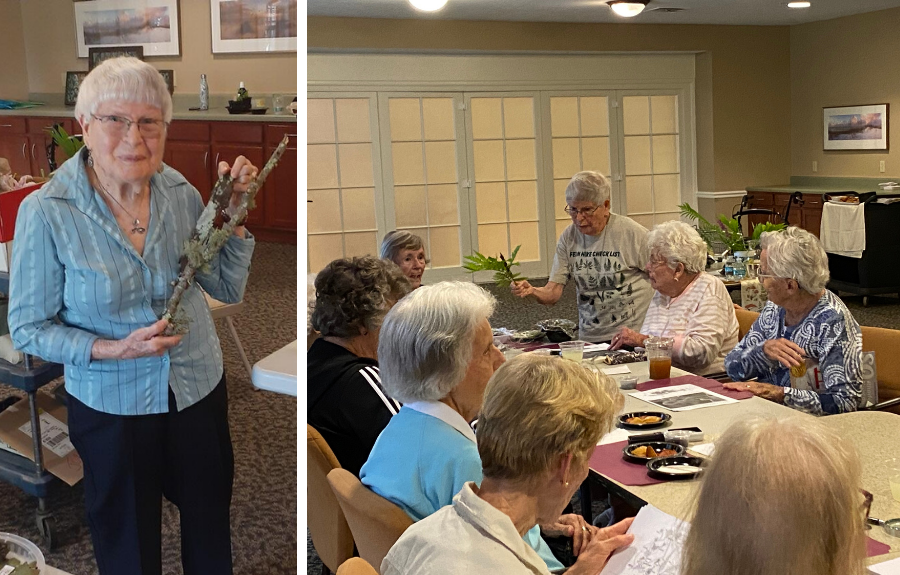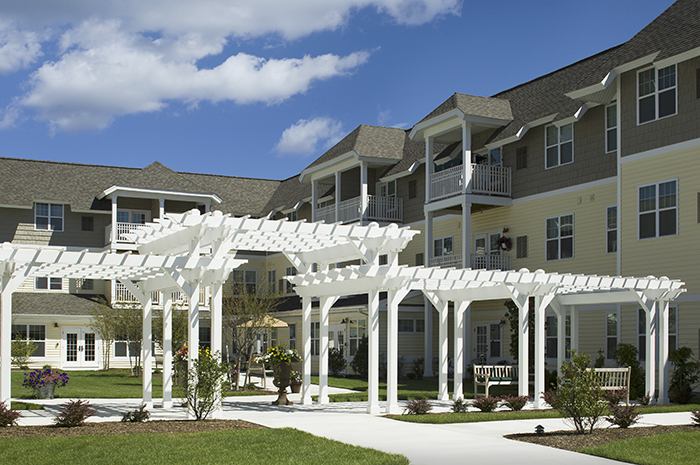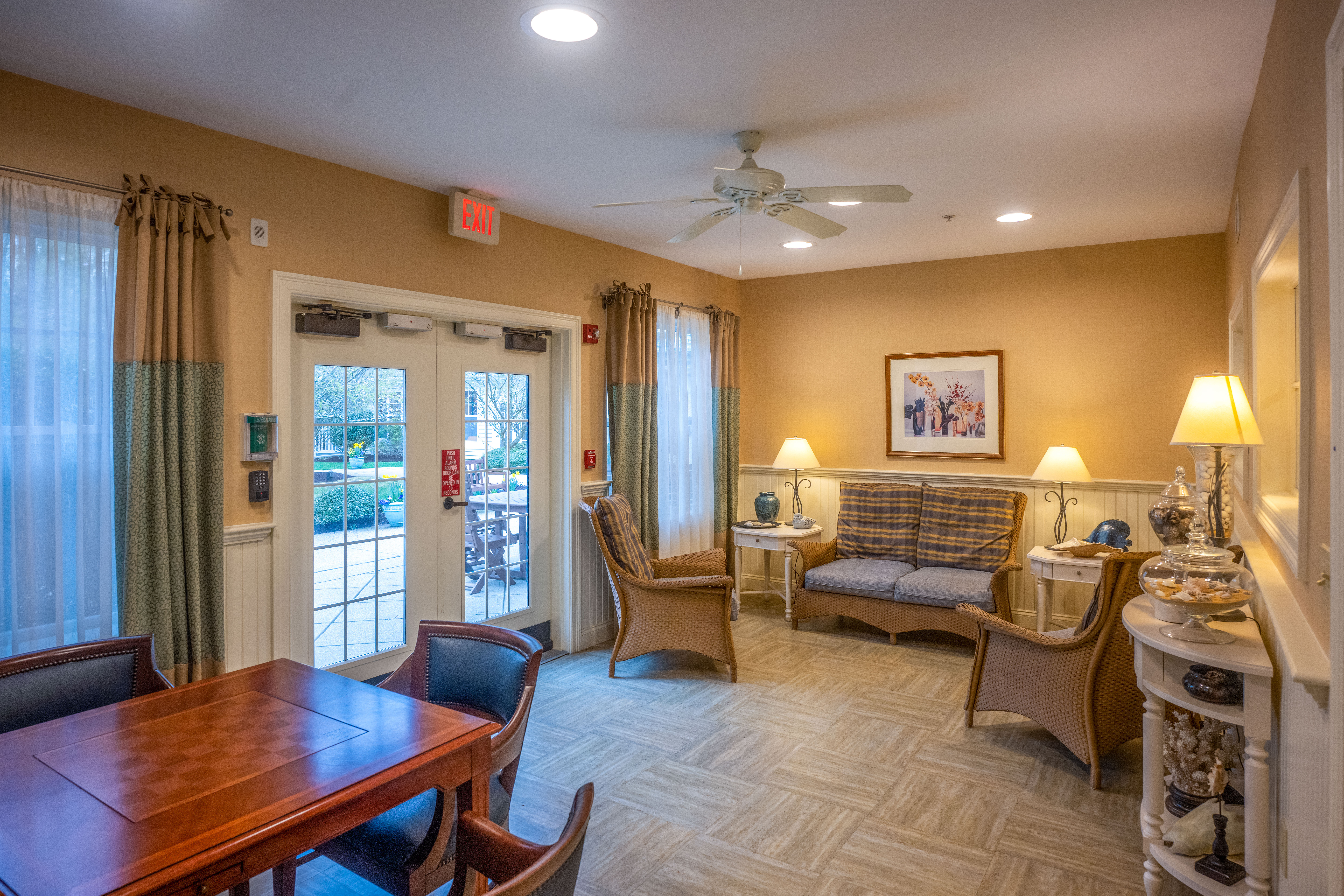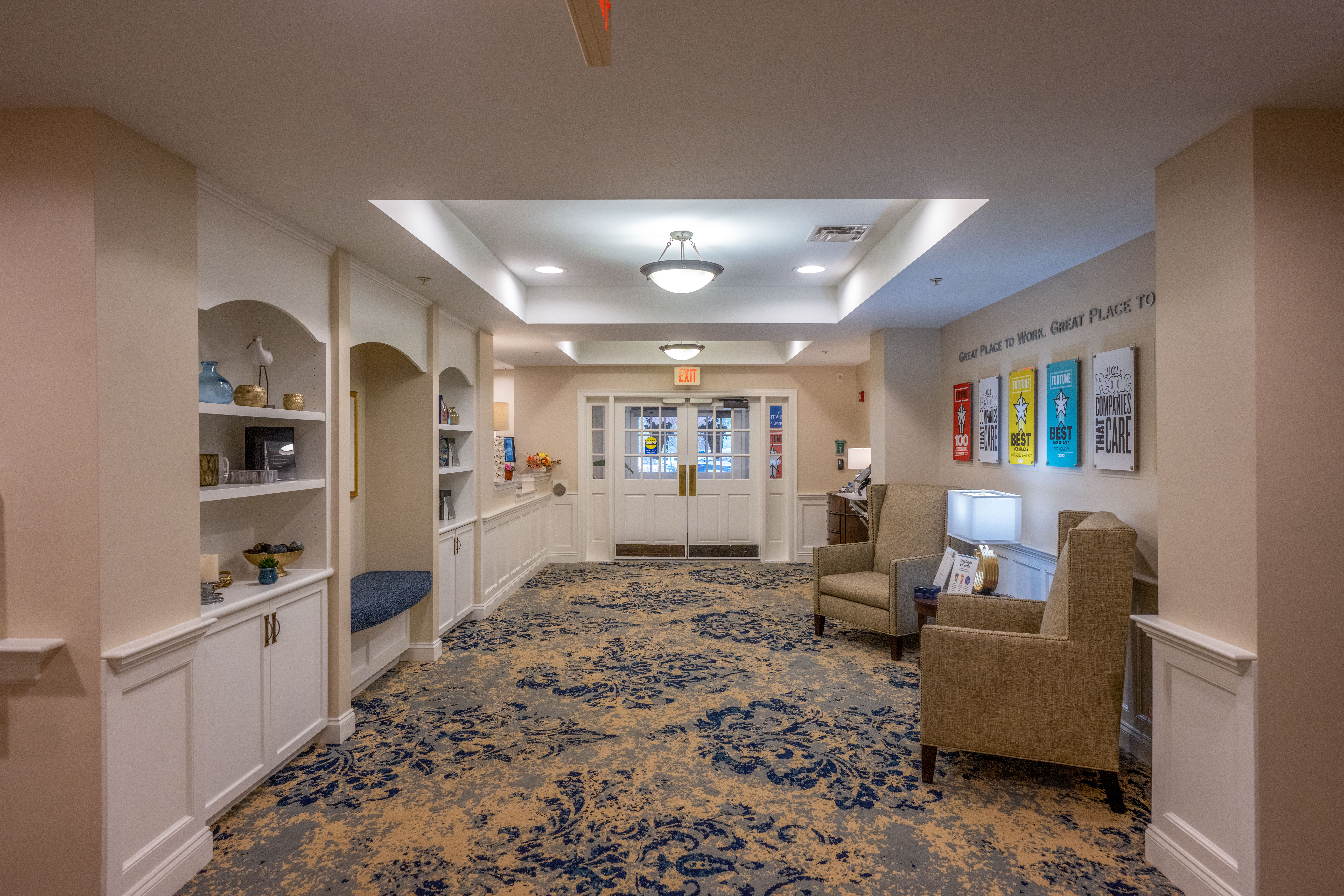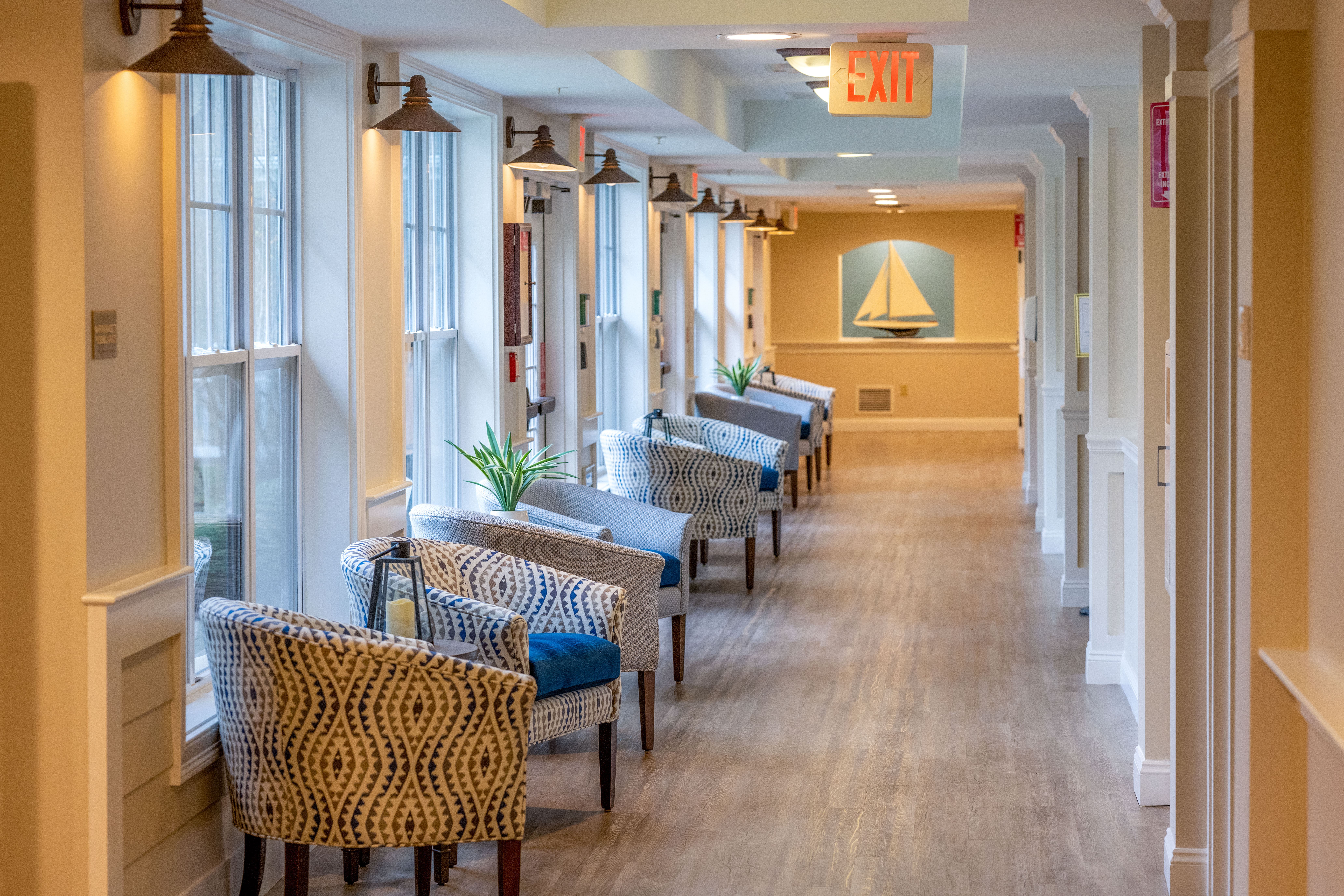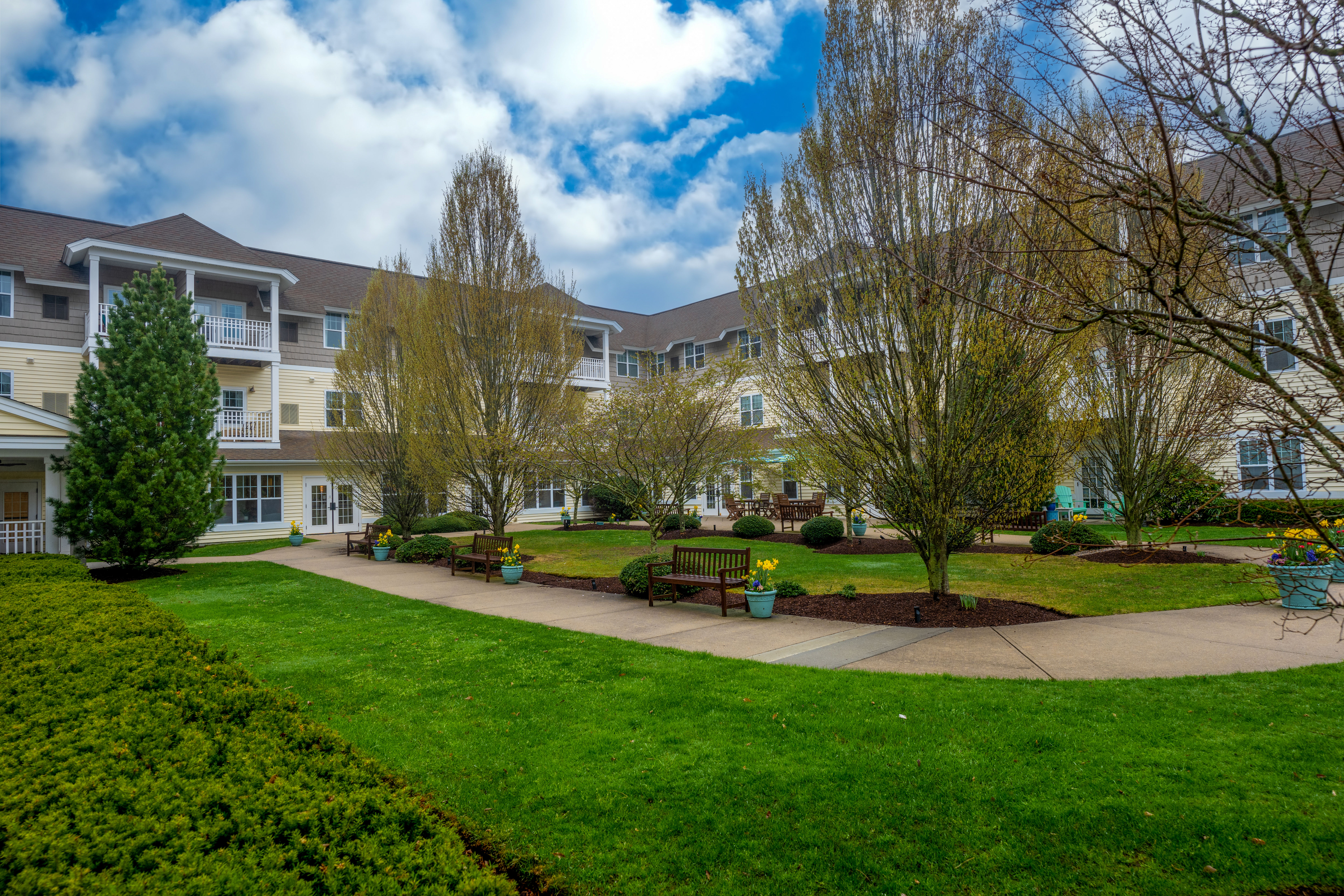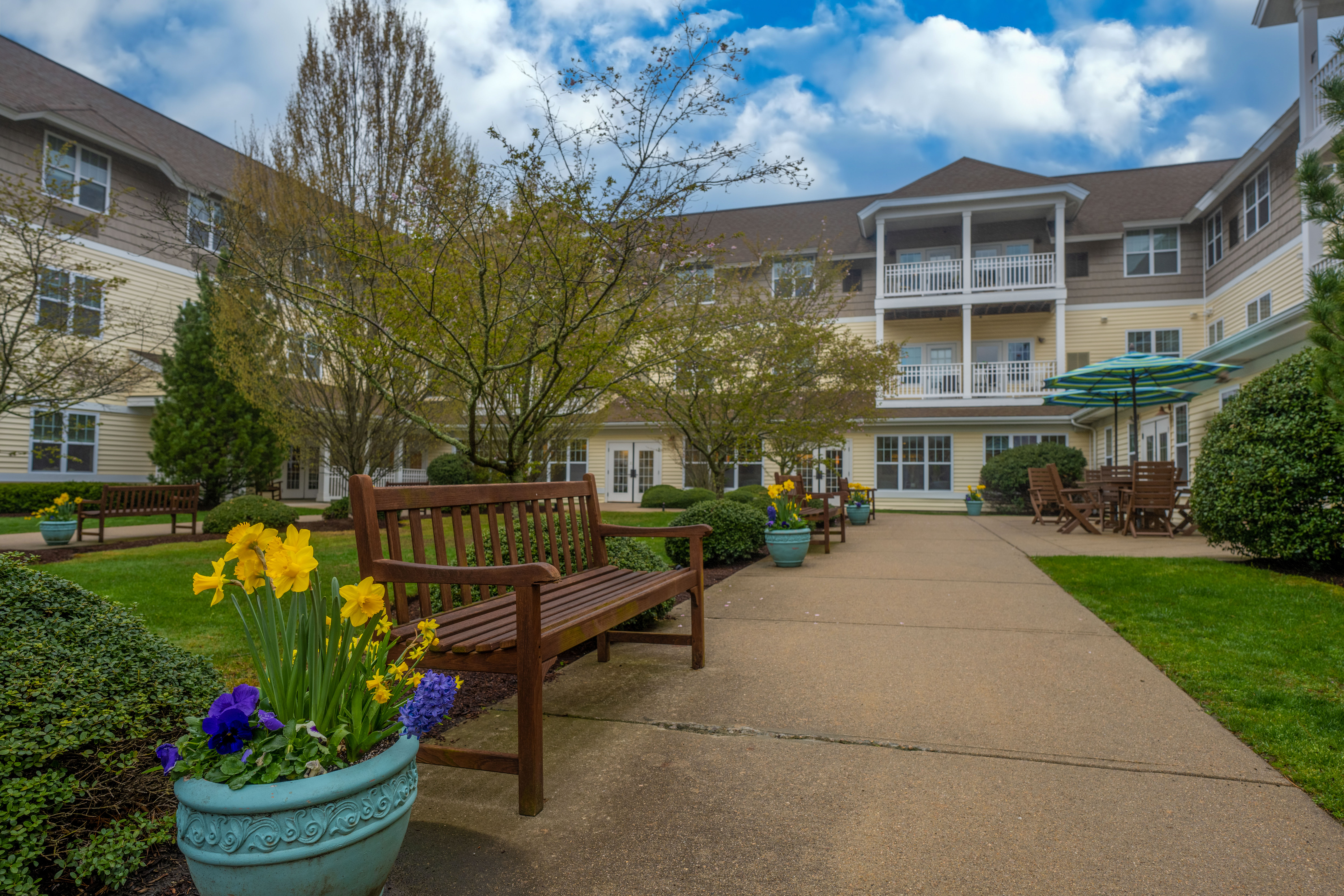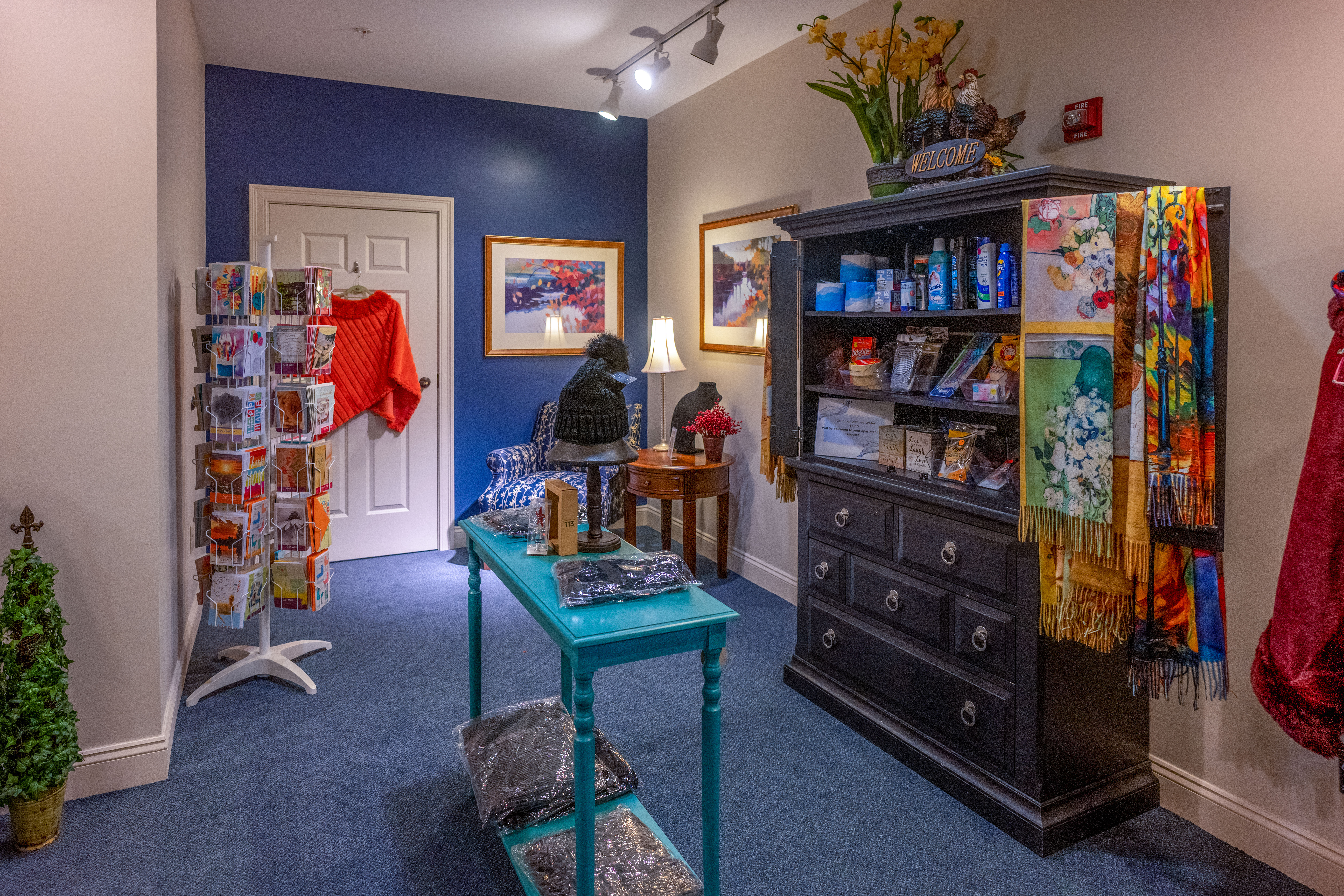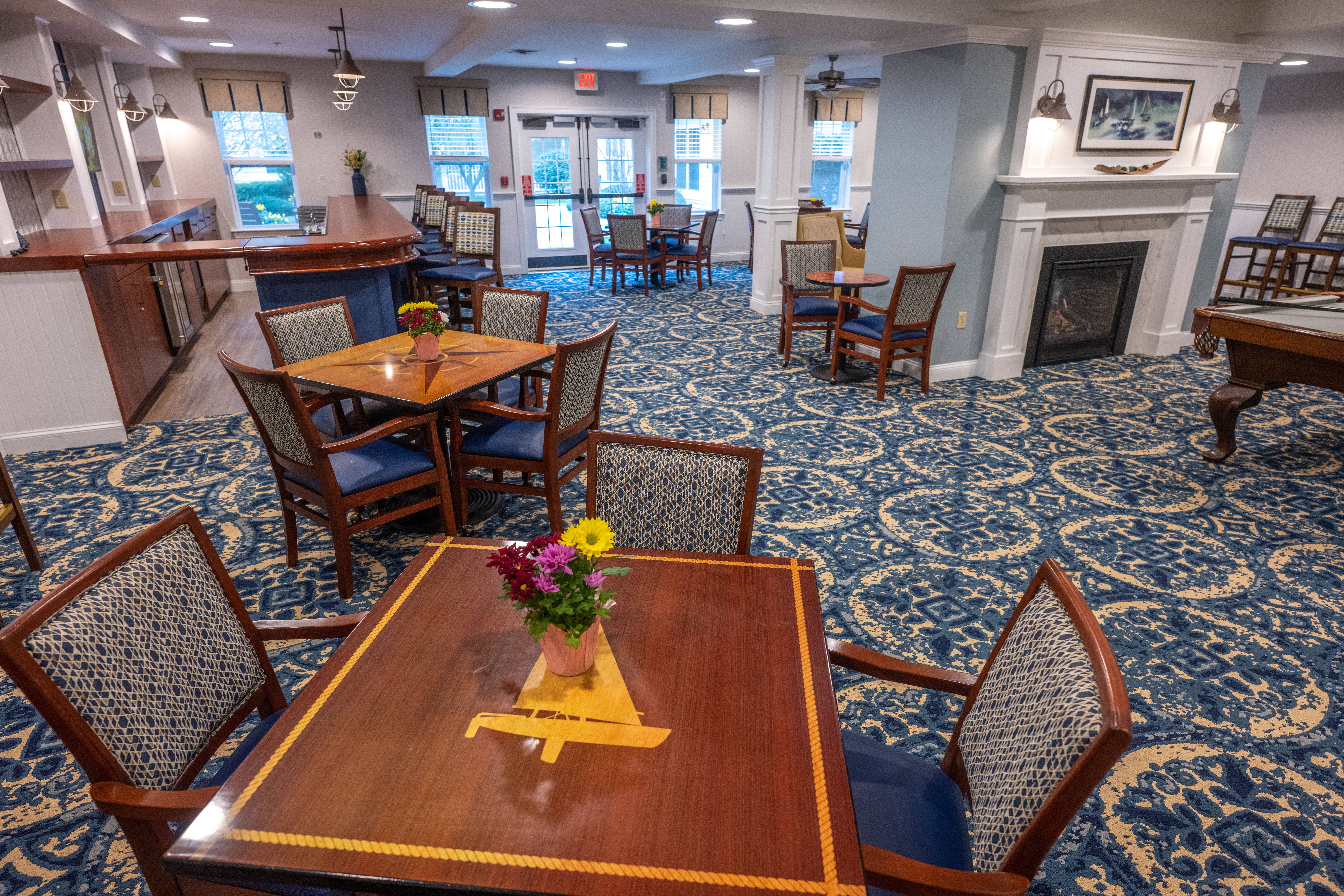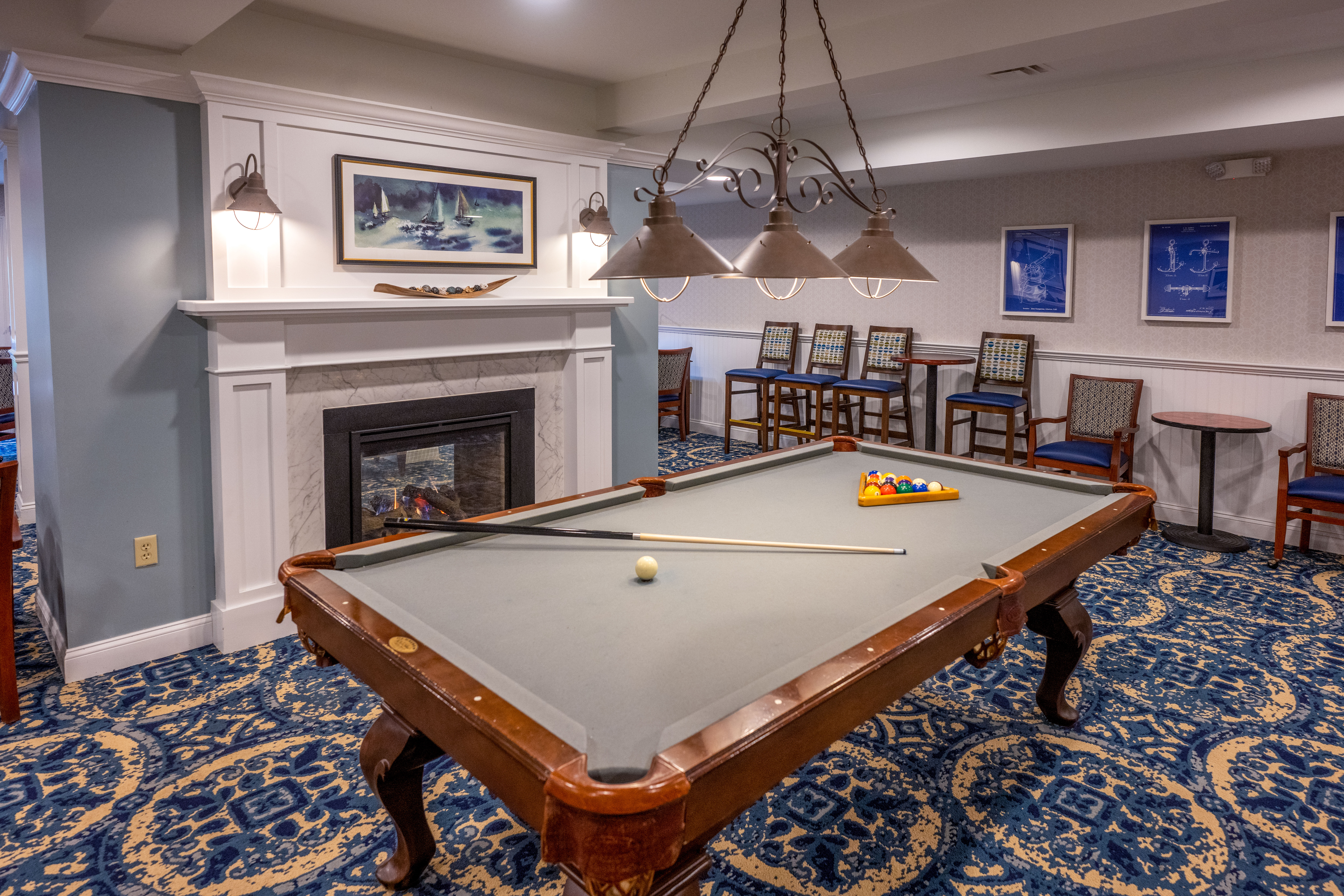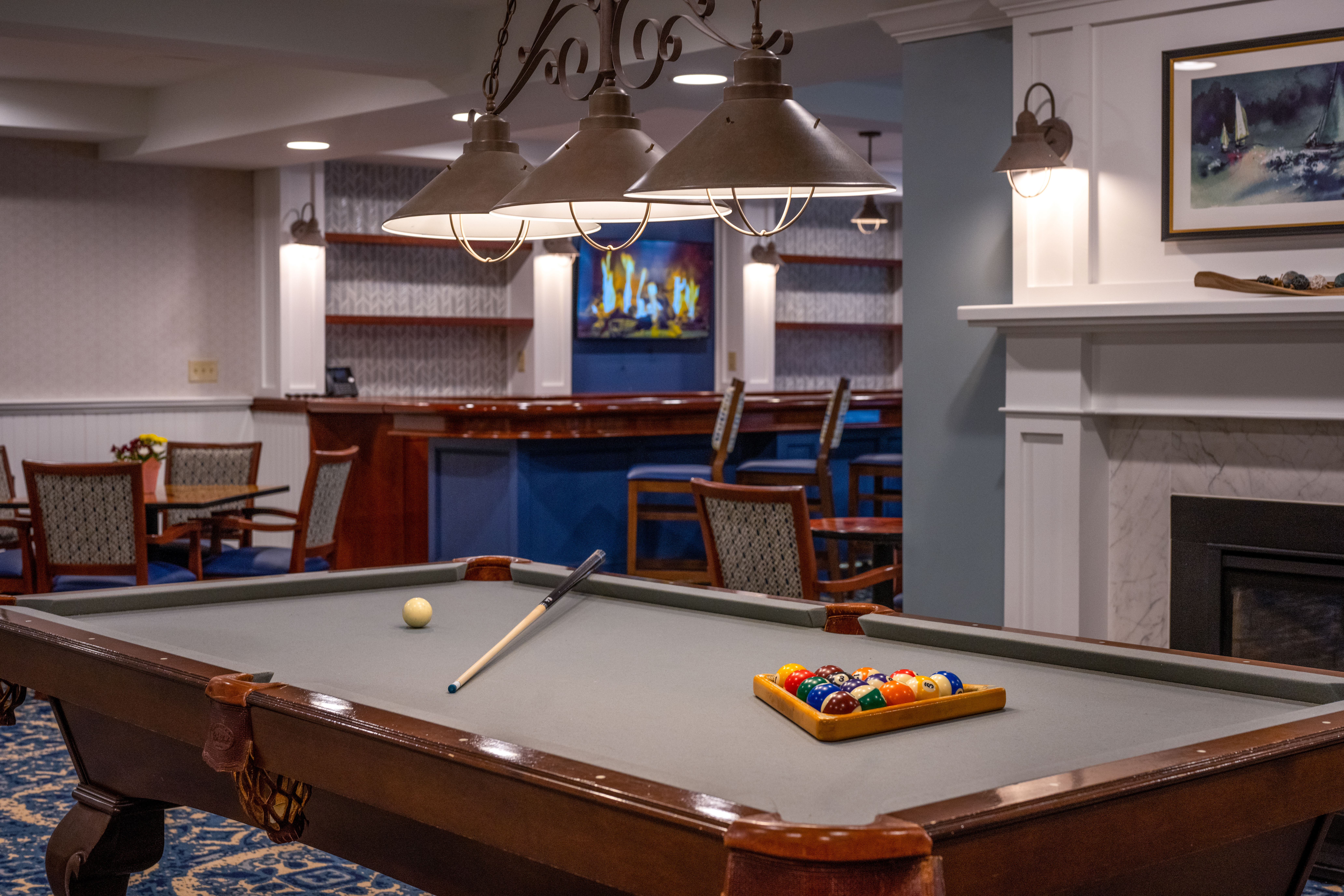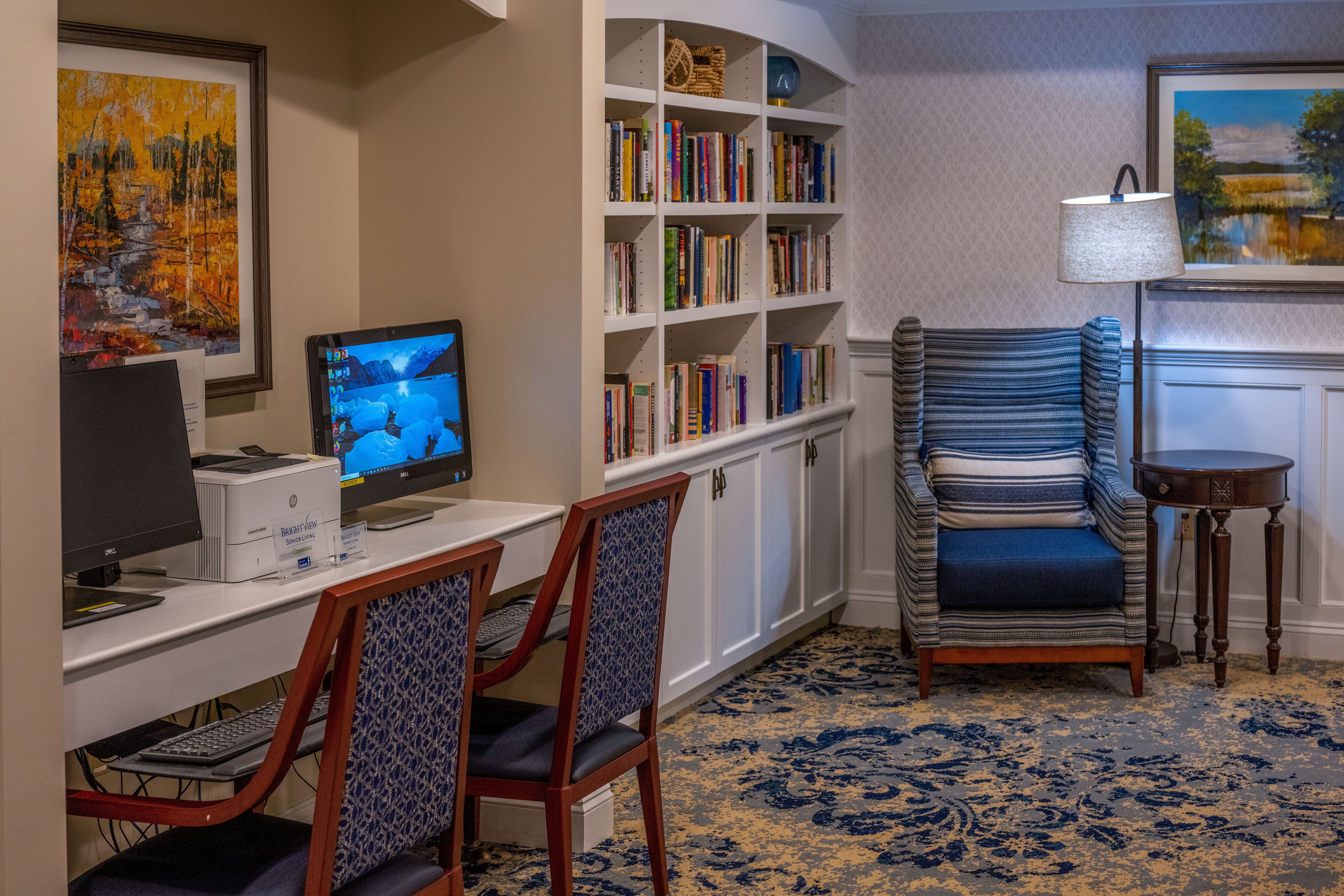At Brightview Commons, residents pack the activity room for presentations from their fellow resident, botanist Dr. Joan Gottlieb. “I’ve given four presentations so far,” she said. “The room kept getting more and more crowded. There’s a thirst for knowing more about the plants you love.”
Joan grew up in New York City and attended the City College of New York, now the City University of New York. There, she earned her degree in biology and sparked her lifelong passion for botany. One of her professors, Joseph Copeland, lead a class trip to the New Jersey Pine Barrens. There, Joan encountered the plant Schizaea, known as the curlygrass fern.
“It’s such a charmer,” Joan laughed. “It’s the most lovely thing you’ve ever seen that’s only 3-4 inches tall.”
One look at the curlygrass fern’s corkscrew leaves and Joan was hooked. She completed her graduate degrees at Harvard University; plant hormones were the subject of Joan’s Ph.D. thesis. After completing her thesis, Joan and her husband moved to Pittsburgh. She started teaching biology at the University of Pittsburgh. In addition to introductory biology courses, Joan led botany seminars for advanced students. Once Joan and her husband started their family, she transitioned to teaching science at Churchill Area High School (now Woodland Hills High School).
Joan kept her love for plants alive outside of teaching through her own magnificent garden. “I had over 180 different types of ferns in my garden at home,” Joan said. She also traveled the world as a part of various botany field study programs. Joan visited New Zealand, China, Costa Rica, Ecuador, the Galapagos Islands, Hawaii, and Trinidad and Tobago to study the local flora, particularly ferns.
It was hard to leave her Pittsburgh garden behind when moving to Brightview Commons, but Joan keeps busy with her apartment plants, the community’s garden, and teaching classes for her fellow residents. So far, she’s covered seed plants, ferns, mosses and lichens, and windowsill gardening.
“I’ve had a wonderful life with this passion of mine,” Joan said. “It’s taken me around the world, makes me happy to be indoors, and I can write about them. I’m happy to have that. You only live once, and you want to do something that pleases you, has some youthfulness, and makes the world a better place.”
If you want to start your own indoor garden, follow Joan’s tips and tricks below.
Dr. Joan’s Windowsill Plant Tips
It is proven that you benefit mentally and physically from having plants indoors. Plants give off oxygen and take in carbon dioxide, effectively cleaning the air. They help you stay active. The biggest benefit is the feeling you get when you have something green in your sight. The benefits of greenery for your brain chemistry are enormous. Here are my tried and true tips.
-
Don’t overwater your plants! More plants are killed from their roots drowning in water than from not getting enough water. There is no standard for how often to water a plant – it depends on how warm or dry your home is. The best way to tell if you need to water your plants is to get your hands a little dirty! Feel the soil, and only water a plant if the soil feels dry to the touch. You can always add water if your plant gets a little wilted.
-
Fertilize your plants every time you water. House plants are pot-bound, so they have no way of replacing the minerals they need to make chlorophyll. You can purchase a commercial fertilizer, which I always recommend further diluting. For example, if the package recommends mixing a tablespoon of fertilizer with water, I recommend mixing a teaspoon. This way, your plant will never get burned from excess minerals. Fertilize every time you water, and your plant will never be depleted of minerals.
-
Let there be light! Many people like to put their plants in a dark corner of their house to brighten it. However, there’s no getting around it – plants need light. The windowsill is the perfect place to sit your house plants. I recommend turning each pot half a circle every day, so they don’t grow lopsided toward the light. In the summer, you may want to pull your plants back from the window a bit. In the winter, give your plants access to all the light you can!
-
Move it on up! As your plant grows, it will need to be repotted into a larger container. Repot them into a new container no more than an inch bigger than the previous pot. Roots like to be close to the edge of the pot – the roots need airflow to grow.
That’s all you really need to know – you’ll catch on very quickly. It’s a joy, don’t make it into a big deal. Let yourself develop feelings for this living thing you’ve brought into your life. – Joan Gottlieb
Brightview Senior Living builds, owns, and operates award-winning vibrant senior living communities in eight states along the East Coast: Connecticut, Maryland, Massachusetts, New Jersey, New York, Pennsylvania, Rhode Island, and Virginia. We offer senior Independent Living, Assisted Living, Enhanced Care, and Wellspring Village™, a specialized neighborhood for people living with Alzheimer's disease and other forms of dementia. Schedule a personal visit to experience our communities firsthand.

